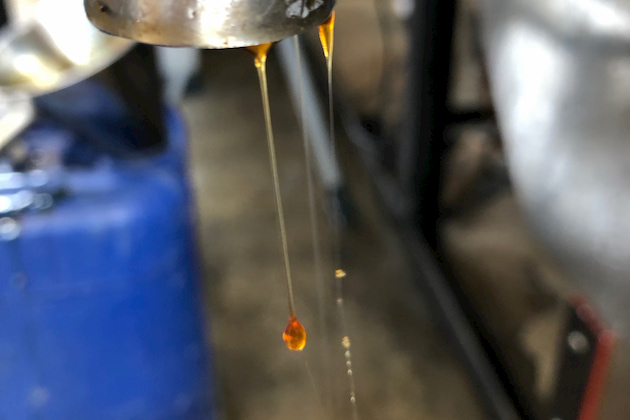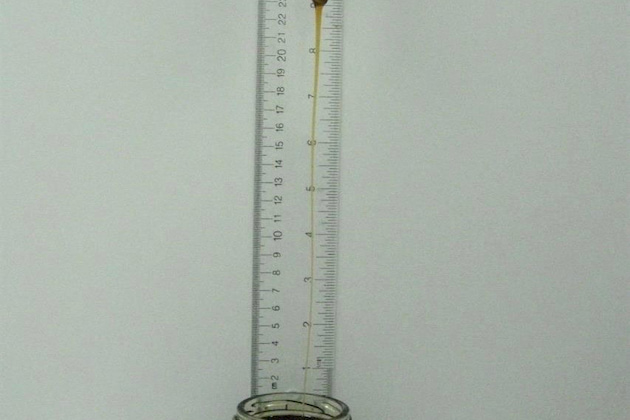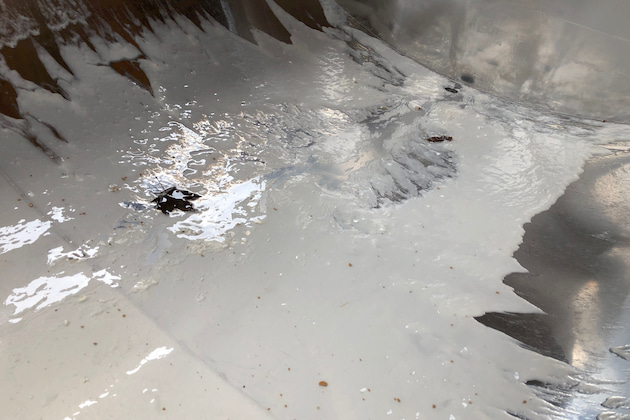Sap & Syrup
Ewww. Make the ropy syrup go away
Acer expert on how to beat the ropy menace
By PETER GREGG | APRIL 15, 2019
CONCORD, N.H.—One of the dreaded phenomenon in sugaring is ropy syrup and researchers have tips on how to beat it.
“It’s a problem that once you’ve known, you don’t want to know again,” said Martin Pelletier, a researcher with Centre Acer in St-Norbert d’Arthabaska, Que.
Pelletier gave a compelling presentation on the topic at the North American Maple Syrup Council’s annual meeting in Concord, N.H. in Oct.
Experts classify ropy syrup as a “texture defect” consisting of a string that extends 4 inches or more in the syrup.
It’s a nightmare in the sugarhouse, making syrup unsellable. It can create overflows in the pan and is impossible to filter.
“Ropy sap is prone to overflow when boiled and, thus, requires a lot of antifoaming agent,” Pelletier said.
Ropy syrup is on the rise in the industry, accounting for 0.25 percent of the overall syrup production in Quebec, the largest maple region in the industry.
While that percentage may seem low, Pelletier estimates that equates to $5.5 million lost to ropy syrup defects in the last ten years in Quebec. That of course doesn’t include the frustration toll on individual sugarmakers.
What has been a mystery to most sugarmakers is what it actually is and where it comes from.
Pelletier said the ropy texture comes from the fermentation of exopolysaccharides (EPS) producing bacteria in sap resulting in stringy syrup.
And the primary culprit is what most sugarmakers would probably expect: poor sanitation and poor handling of sap.
Sugarmakers thinking that any bacteria in syrup can be boiled away are only half right, he explained. While the bacteria can be boiled away, the metabolites will be left behind. And that’s where the strings come from.
There will be a higher probability of ropy syrup if the sugarmaker waits too long to boil and the sap gets warm during that time, sitting at temperatures at 40 degrees or more.
Other problems will occur if the sugarmaker has a long cooling after shut down and a long downtime between runs. Other culprits include sags in the mainline and general poor maintenance and sanitation.
Pelletier speculated that one reason for increased ropy syrup over the years is the advancement of technology and sugarhouse design. Sugarhouses are no longer cold, drafty “shacks” but are now in many instances warm and insulated.
“Warmer sugarhouses lead to more problems,” he said.
Pelletier and his colleagues at the Centre Acer spent a lot of time research and testing ropy syrup, including storage of sap at temperatures as high as 74 degrees and found the higher the temps and the longer sap sits, the more likely to see the dreaded strings.
Those strings will appear at even lower temperatures of 59 degrees or less, even occasionally at 40 degrees.
The good news is that ropy syrup can be prevented, he said. And most of those methods are commonsensical.
“We recommend efficient washing and sanitation of equipment,” he said. “Ropy syrup cannot be reversed without sanitation.”
Just as important is to keep sap as cold as possible and boil it as fast as possible.
If the sugarmaker experiences ropy syrup it’s time to shutdown and start cleaning. And clean everywhere, at all points downstream from the front pan.
Pelletier recommended to pay close attention to float boxes, where warm sap can sit and sit.
“Float boxes are really a problem,” he said.


































